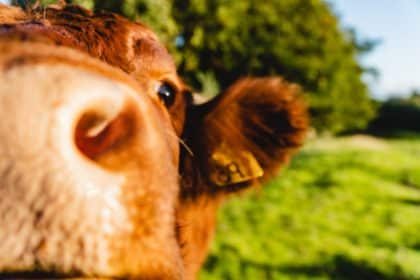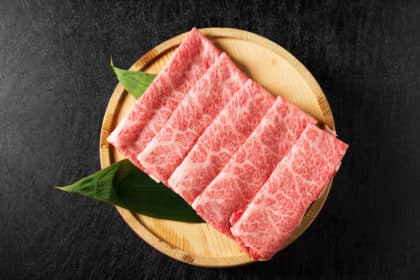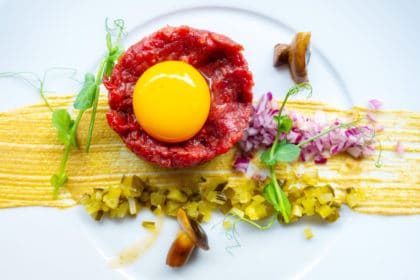Author: Wagyu Sommelier
Ladies Do It Better, Even Wagyu Ladies
A vast majority of Wagyu meat produced in Japan is either from heifers (young virgin females) or steers (castrated males). Between the two, heifers are more highly prized for their tenderness and silky texture.
Mishima-Ushi: The Purest of All Wagyu
Mishima-ushi has the purest bloodline among all Wagyu.
Designated as a national natural treasure by Japan, only 12-13 Mishima-ushi are released per year for meat consumption.
3 Ways to Cut Ingredient Cost When Serving Wagyu
Serving Japanese Wagyu does not have to be cost-prohibitive. With a bit of ingenuity, many more restaurants can put Japanese Wagyu on their menus. This article discusses 3 easily adoptable tricks.
Japanese Wagyu Has Free Trade to Thank for Its Intense Marbling
The entire Japanese beef cattle industry was at the brink of extinction in the face of foreign competition. This article introduces a little-known historical fact that contributed equally, if not more, to the opulent marbling of Japanese Wagyu – free trade.
Nanjas’ Favorite Wagyu: Iga Gyu
Among the over 150 brands of Japanese Wagyu, only one is said to be the Wagyu enjoyed by ninjas – Iga Gyu. Those who are lucky enough to have sampled Iga Gyu would agree that the ninjas had great taste in beef.
Wagyu – Why It Has To Be Japanese?
Have you ever wondered what the difference is between Japanese Wagyu and its western counterparts raised in the U.S. or Australia? Here are 4 reasons why Japanese Wagyu is the superior choice.
Wagyu & Egg: The Inseparable Pair
Have you thought about why there is usually an egg yolk on your steak tartare? The golden combination of beef and eggs has been scientifically proven to enhance the flavor and texture of the meat. The effects are further amplified when it comes to Japanese Wagyu.
Koshu Wine Beef: The Wagyu Kissed by Bacchus
Ernest Hemingway once said: “My only regret in life is that I did not drink more wine.” His remorse is certainly not shared by the Koshu Wine Beef, as this brand of Wagyu is fed the grape marc from wine making from the tender age of 6 months.
Kobe Bryant v. Kobe Beef: Who Was the Original?
Did you know that Kobe Bryant actually sued the City of Kobe over the right to rename the highly coveted Kobe Beef, but he was actually named after Kobe Beef?
Wagyu & Sea Urchin – A Love Story
For decades, Wagyu and sea urchin were like an odd interracial couple in a small town before Loving v. Virginia – People looked, gossiped, and gasped, but very few approached, let alone adopted. But the chemistry of the couple cannot be suppressed, and the flame of their love burns ever more passionately. Thanks to a new generation of open-minded chefs and food scientists, this once forbidden love is now celebrated around the globe!






